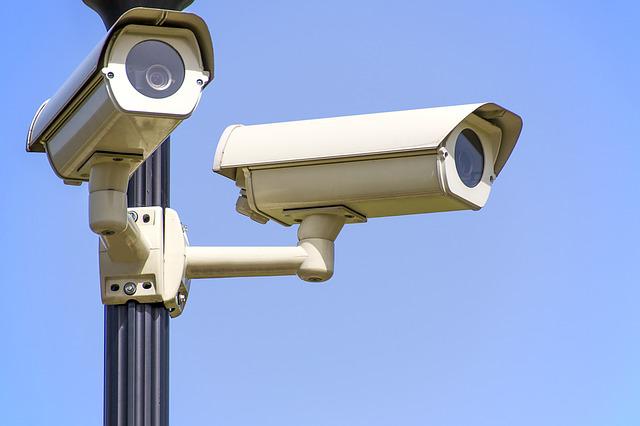
The Schlage Encode deadbolt is one of the most advanced deadbolts on the market. You can control your door remotely using Wi-Fi and manage up 100 guests access codes. It also has a touchscreen with a fingerprint-resistant and capacitive surface for easy one-touch locking.
Wi-Fi enabled deadbolt
Schlage's WiFi-enabled deadbols are compatible with the Schlage Home application to allow you to create guest access codes. It can store up to 100 codes, and the fingerprint-resistant touchscreen enables one-touch locking and unlocking.

The Schlage Encode Smart WLAN Deadbolt is designed to connect with your home's Wi-Fi and is compatible most smart home hubs like Apple HomeKit (Amazon Alexa), Google Assistant, and Google HomeKit. The device is compatible with any Z-Wave gadget, such as a smartTV. It can also be controlled from a smartphone via Bluetooth. However, it is not yet compatible with Zigbee hubs.
Lacks two-factor authentication
One of the problems with Schlage Encode is its lack of two-factor authentication. The device lacks this feature and you need to use a separate app to set it up. It can also be affected by connectivity issues and insufficient bandwidth. You can try unplugging the Schlage Encode to resolve this issue and reconnect it again.
The Schlage Encode app needs to be updated or it might not be connected to the right network. You might also have it connected to the wrong WiFi band. You should place it close to your router if this happens.
Lacks dual data encryption
The Schlage Encode Plus smart lock claims to use dual data encryption (up to 128-bit AES). This should prevent unauthorised access. The smart lock's app doesn't have two-factor verification, so you will be alerted if someone attempts to access it. Wyze Lock, another smart lock, also has two-factor authentication. However, this feature can only be used if you have an app installed.

Lacks fingerprint sensor
Invisible locks lack accessories or a touchscreen, but they are wireless and operate using a fingerprint reader. They can be controlled via a tablet or mobile phone. These locks are wirelessly unlockable via Bluetooth and Wi-Fi. This makes them an attractive choice for landlords who are worried about security.
FAQ
Can ADT ever be hacked
ADT security systems are one of today's oldest home alarm systems. Many consumers still consider ADT Home Security System to be the safest choice. Its reputation as a trustworthy company that protects homes against burglary and fire is what they trust.
But, like all things, even the most trustworthy organizations find themselves under attack. Hackers can hack into any network at any given time and steal sensitive information. When a hacker successfully infiltrates your network, he gains access to everything stored on the computer as well as the ability to change important settings of the software and hardware. Hackers could, for example, delete files or change passwords. They can also shut down entire systems. It is important to realize that hackers may not be able to see your files or access your home. You need to arm yourself with information on how to keep your systems protected.
Do motion sensors come with alarms?
Motion sensor alarm systems have been around for decades, and they have become increasingly popular due to the rising number of break ins and thefts. These devices can be too costly and do not work well inside cabinets. If you are looking to protect your home from potential intruders, a motion sensor alarm system might be worth considering.
Which is better: home security cameras or home security systems?
Home security systems are better than home security camera because they can detect movement and sounds even if nobody is in the room. However, home security cameras can be mounted on doors and windows easily and are less expensive than home systems.
Which Home Security Systems Are Unhackable?
The definition of hacking will determine the answer to this question. Hacking refers only to the unauthorized use of computer systems, networks, data, and programs. Most home security systems cannot be hacked because they do not contain software that allows someone else to control them remotely. They also don't allow anyone to enter your house without permission.
But, it is possible to hack some home security system if they are connected online. These systems typically require a password for operation, so anyone who knows the correct password can hack them.
Statistics
- Most home security companies will charge you around 75% of the remaining term of your contract if you cancel early—and some require 100%.Related questionsWhat type of contract length can I expect from security providers?Home security system cancellation (safewise.com)
- Cove sets you free without punishing penalties and fees, unlike other security solutions that charge 75% to 100% of your remaining contract. (safewise.com)
- Related questionsHome security systems that are 100% DIY (safewise.com)
- That's probably why Cove has a whopping 98%* customer retention rate. (safewise.com)
External Links
How To
How to Install Outdoor Motion Lights
How to install outdoor lighting
The first step in the installation of outdoor motion light fixtures is choosing the right light fixture type. Next, determine the location of your lighting fixtures. The next step is to wire the system. The last step is to mount your lighting fixtures.
Outdoor motion lights are used to illuminate pathways, driveways, walkways, sidewalks, patios, steps, stairs, decks, porches, gardens, pools, fountains, ponds, water features, trees, shrubs, flowers, bushes, lawns, and grassy areas. You can find them in many shapes, sizes, colors, and styles. Floodlights include spotlights. Pendants, downlights. Track lights. Wall sconces. Chandeliers.
Motion lights come in three basic types: hardwired, wireless, and battery-powered. Hardwired systems connect the power source directly to the fixtures using wires. Wireless systems use radio waves for transmitting signals from one fixture into another. Batteries are used to power the fixtures.
Most hardwired systems can be installed by electricians. It is important to ensure that an electrician who will be doing this work knows how to wire outdoor lights. Otherwise, you should consider hiring someone who specializes in installing these kinds of systems.
It's often much easier to install wireless systems than hardwired. Wireless systems don't require you to run wires through ceilings or walls. However, if you decide to purchase a wireless system, you must first figure out which kind of wireless technology works best for you. There are two major types of wireless technologies. IR systems must have line of sight between receiver and transmitter. Because RF systems can bounce off furniture and walls, they allow for some obstruction.
You will need to choose the right controller for your wireless system before you buy it. Many outdoor motion lights have built-in controllers. However, you have the option to either wire them or use a handheld remote to control them. Wired remotes are wired to the fixtures through cables. Handheld remotes look just like flashlights. You can operate them by pressing buttons on their bodies.
It is easy to set up battery-powered systems. It is easy to connect them to an electric outlet. To prevent the lights from turning on when there's no motion, most models have sensors that detect movement. When something moves near the sensor, the lights turn on automatically.
Most outdoor motion lights also have timers. These enable you to conserve energy by switching on the lights at night and turning them off during the day. They can last anywhere from 10 minutes up to 24 hours.
It's tempting to spend more on expensive outdoor motion lights. It is not worth paying more for a feature that you don't need. A simple LED spotlight should suffice. It will not cost much and provide ample illumination.
The Best Home Security System. The home security industry has grown tremendously over the past few years. This is due to technological advancements and increased public awareness on crime prevention. As a result, homeowners today have a wide variety of options when selecting a home security system.